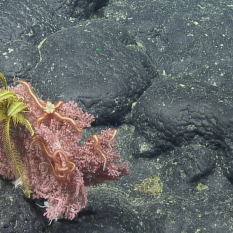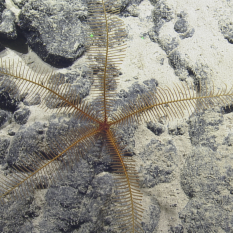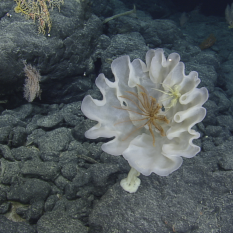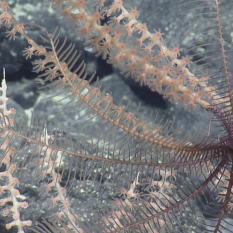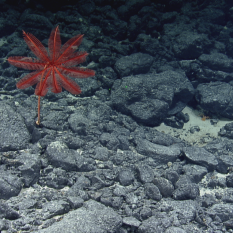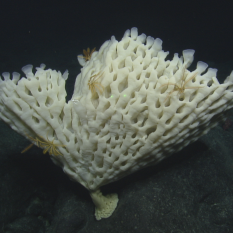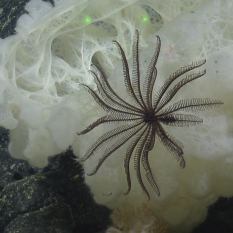A Bouquet of Deep Sea Lilies & Feather Stars: Crinoids of Papahānaumokuākea
This photo album highlights the array of crinoids discovered within and around Papahānaumokuākea Marine National Monument (PMNM) during expedition Luʻuaeaahikiikekumu. There are more than 80 species of crinoids found worldwide and they are the oldest living echinoderms, dating back more than 400 million years. Our sightings of these beautiful and ancient marine invertebrates came in a variety of colors and were easily spotted with their elaborate crowns consisting of their many arms. Crinoids grow up to 2 feet tall, and our sightings spanned a variety of sizes. Crinoids were seen either standing alone with a stalk (sea lily) or attached to other animals or rocks without a stalk (feather star). Some photos also include two green points which are 10 centimeter scaling lasers that come from ROV Hercules and provide an estimate of size when exploring.
Contributed by Science Communication Fellow Shellby Johnson-Rodney.
Taxonomic identifications are preliminary from the onboard team for these photos. Part of the work of exploring is discovering new species and observing species in new ranges, so more work will be needed by scientists ashore to confirm exact IDs. The taxonomic identifications included for these photos were estimated using the deep sea animal guide provided by NOAA Ocean Exploration.
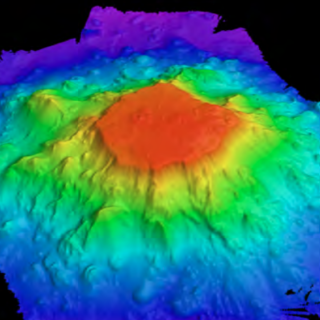
Luʻuaeaahikiikekumu - Ancient Seamounts of Liliʻuokalani Ridge
This expedition will have E/V Nautilus returning to Papahānaumokuākea Marine National Monument (PMNM) to build on the accomplishments of the 2021 Luʻuaeaahikiikalipolipo expedition, which mapped the previously unmapped Liliʻuokalani Ridge Seamounts. The team returns for the first visual exploratory surveys of the seamount chain looking to investigate a puzzling split in the seamount trail.
